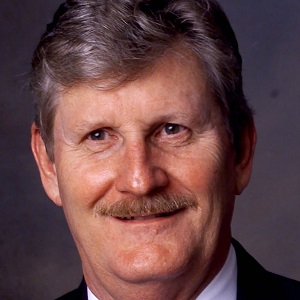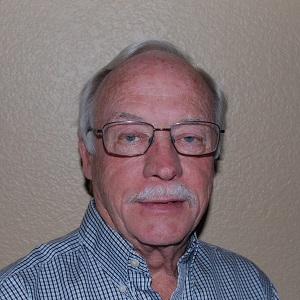SmartEquip Sets its Sights on New Markets

This week we present an interview by Jenny Lescohier. She spent some time with Alex Schuessler to give this report: “SmartEquip Sets Its Sights on New Markets.”
Part of Ritchie Bros’ umbrella of companies, SmartEquip looks to expand its equipment lifecycle support and parts procurement platform across the globe
To the digital natives in today’s rental industry, SmartEquip’s presence as a service support platform might be taken a bit for granted. Its role has become so integral in its customers’ operations, some users might not be able to imagine the way things used to be done.
If you ask Alex Schuessler, founder, and president of SmartEquip’s International Group, he’ll tell you things have come a very long way since 2000, when the company started.

Alex Schuessler, founder & president, International Group.
SmartEquip now supports almost eight hundred suppliers worldwide and more than one hundred rental fleets on its system, including the top five global rental companies.
“For the typical rental company anywhere in the world, approximately 1% of overall spend is on parts. And yet, in the absence of our technology platform, because of the operational overhead associated with parts procurement, it will still be the most expensive type of purchase,” he notes.
“First, you need to be a service technician to identify the right parts for your equipment. And when you get it wrong – which is often the case, because it’s very difficult to get the right parts for the right make, model, and serial number – the consequences are costly, not just in terms of service technician time, but also equipment performance: even if just one the 10 parts you order is wrong, that equipment will be down for at least another 24 hours.”
He adds, “Service technicians themselves are the most expensive employees in a rental operation, and they are increasingly hard to come by. So that’s really what we first focused on, and we subsequently became very obsessive about everything to do with the machine lifecycle and how to reduce associated costs along the way. The ultimate question was, how do we minimize downtime, and how do we accomplish this in an industry-spanning way?”
We talked with Schuessler to find out more about SmartEquip and how it’s affected the way rental companies procure parts and more. Here’s what he had to say:
Rental Briefing: What led you to SmartEquip?
Schuessler: I was originally trained as an economist and political scientist specializing in data science and worked as a junior professor at New York University. One of the things I was always very interested in was how to make the ever-increasing amounts of data the world was generating usable, and actionable for people who were not data scientists.
While I was at NYU, through a weird set of coincidences, I was asked to give some advice to a former Caterpillar executive who had just been invited back to help Cat launch a corporate rental initiative for dealers across South America.
I became one of the co-founders of a global equipment rental consulting group initially called Caterpillar Rental Services Network Inc. (CRSNI), which later rebranded itself as Script International.
We created rental locations across forty-five countries, initially across South America for dealers there, and later, across the Middle East and Europe, too. Much of what we did back in the 1990s found itself in what is known as The Cat Rental Store today.
While we’re doing that, as an economist I became very involved in modeling the power of rental in helping dealers cope with an environment of hyperinflation, as was rampant in those days. But I also began to look at fleet efficiency, return on asset, equipment lifecycle costs, and so many other things. I thought, there’s so much opportunity here for technology to drive efficiently.
We seed-funded SmartEquip with a focus on helping large equipment rental companies like United Rentals, Sunbelt Rentals, and NationsRent support service technicians and automate the procurement of tens of thousands of different parts from hundreds of different suppliers in an efficient, serial number-specific way to reduce service labor and equipment lifecycle costs and improve equipment uptime.
SmartEquip is both a service support platform but also a purchasing and procurement environment.
Rental Briefing: How has SmartEquip grown over the years?
Schuessler: Over the past 24 years, SmartEquip has grown to support almost eight hundred suppliers worldwide across more than one hundred rental fleets through its network, and this includes the top five global rental companies.
A major milestone was the 2021 acquisition of SmartEquip by Ritchie Bros. (now RB Global), which represented a movement in focus by RB Global, which had begun with the earlier acquisition of Rouse. RB Global has long been the global leader in supporting the buyer and the seller in the transactions of equipment, in maximizing the returns for buyers and sellers alike. With the acquisition of services companies, RB Global now turned its attention to maximizing the returns on owning equipment as well.
This, of course, has always been SmartEquip’s obsession: Our goal had never been to maximize the returns on an asset sale, but to maximize the returns on asset ownership.
RB Global bought Rouse a couple of years prior, given its focus on helping companies understand their performance by benchmarking pricing and utilization metrics using localized market information, and providing localized market values by showing in near-real time, what a fleet’s assets are worth in the retail and auction market.
With Rouse and SmartEquip, RB Global offers a full lifecycle experience to the owner, be it for the bookends of equipment acquisition and disposition, or the period of ownership in between the two. It’s become a very full set of solutions that covers everything that affects equipment owners, from the purchase itself, to helping determine when to sell, all while minimizing the cost of service and support along the way.
On a practical basis, the acquisition by RB Global provided us with access to a global corporate infrastructure, strategic accounts and partnerships which have all contributed significantly to accelerating SmartEquip’s growth.
Rental Briefing: What markets is SmartEquip focusing expansion on?
Schuessler: We are currently witnessing record growth rates, not just in North America, but across Europe and Asia-Pacific as well. In Europe we have sufficient penetration among the largest rental companies, who have taken the lead in making us an industry standard, such that we can now expand into supporting mid-sized rental companies as well.
In Asia-Pacific, Japan is a major focus due to its rental-focused market with over 85% rental penetration. Factors like low rental rates increase the potential impact not only of SmartEquip’s cost-reduction solutions, but also of the positive impact Rouse can have to make informed fleet management and capital allocation decisions. Two of the four largest Japanese rental companies are already on SmartEquip, and we are projecting significant growth for the years to come both here, as well as across other APAC nations such as Australia.
Rental Briefing: What challenges exist in these new markets?
Schuessler: Cultural differences can pose initial challenges to adoption, especially in Asia-Pacific markets like Japan, where relationship building is important. However, the goals of optimizing equipment utilization and costs are globally consistent, so the solution is remarkably robust across the international scope.
Unique local market factors may also impact SmartEquip’s solutions. For example, Japan’s low rental rates mean profitability for a given asset is often only achieved toward the end of its ownership lifecycle, at the point of resale. This increases the potential return on SmartEquip’s solutions that aim to reduce costs and inform optimal resale timing across the ownership period, and it increases the potential return on Rouse solutions, by helping users leverage their data to compete effectively and make informed, timely disposition decisions.
Understanding such nuances is crucial for SmartEquip to tailor its value proposition. While technology implementations may face initial hurdles, cloud-based offerings have made SmartEquip more accessible worldwide.
Partnerships are also vital, like SmartEquip’s strategic local partner in Japan that mirrors its business model and relationships. Overall, different markets represent greater opportunities due to SmartEquip’s unique ability to impact equipment ownership economics.
Rental Briefing: What is the SmartEquip e-commerce platform?
Schuessler: Originally launched as a “webshop” extension for equipment manufacturers who were already partnering with SmartEquip, the eCommerce platform has since evolved into a full-fledged solution for any company seeking to sell parts online.
Parts e-commerce requires far more extensive data structures than standard e-commerce applications, and this is where SmartEquip leverages its extensive industry knowledge to ensure accuracy and efficiency, alongside ease of use. This provides a far richer shopping experience in an equipment context, compared to general e-commerce platforms which cannot support the complex transaction surrounding parts.
Recent additions include more extensive options for online payments and user registration, supporting the use of the platform as a standalone solution rather than just an extension of SmartEquip’s Network. It has seen success with manufacturers and with dealers and rental companies who are also selling parts to their customers.
Published on 21 May, 2024
About International Rental News (IRN)
International Rental News (IRN) is written for equipment rental companies worldwide. Our readers operate in sectors including construction, general industry and events, and rent equipment including construction machines and tools, aerial platforms and telehandlers, portable accommodation, shoring equipment, and power and heating and cooling equipment.
Did you enjoy this blog? Read more great blog posts here.
For our course lists, please click here.










